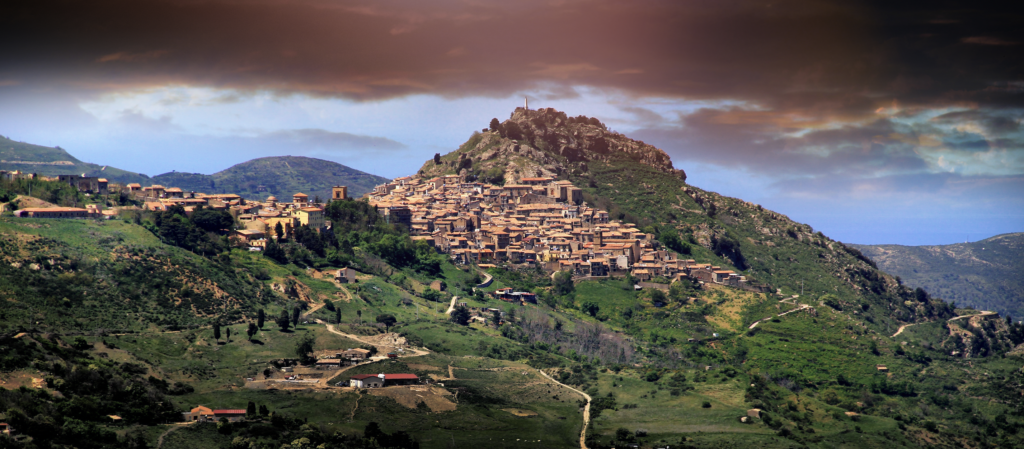
This essay was originally published in the Full Stop Quarterly “Cynicism” issue (Fall 2022). Subscribe at our Patreon page to get access to this and future issues, also available for purchase here. Your support makes it possible for us to publish work like this.
In Italy, people often tease me for my dumb, American optimism. Hope is naïve, or even worse, a willful state of ignorance: It looks at patterns that haven’t changed for centuries, and then ignores them to feel better in the moment. Hope seems even dumber on the island of Sicily, which has been dominated and exploited by various powers for ten thousand years, from Ancient Greeks to Islamic emirs to Spanish kings to gangs of roving bandits to the Mafia, and where a sense of fatalism is culturally ingrained. The Sicilian proverb “a bon’è ca si mori” consoles that “at least one day you’ll die.”
I currently live in Palermo on a Fulbright grant meant to foster cultural exchange, but my outlook is still pathologically optimistic: I remain hopeful in an uncool way about the future of institutions and the improvement of people’s terrible boyfriends. Cynicism seems fruitlessly paralyzing to me, if not a cliché macho posture. That said, during periods when political news seems to reach depressing new lows every day, the writer I have been turning to for comfort is Maria Messina, the Negative Nancy of Italian letters. There is no masculine equivalent to the term Negative Nancy, and so it seems all the more inspiring that in 1909 a twenty-two-year-old girl in Sicily published her first collection of short stories, frankly describing the world as a shithole.
Born in 1887 to a school inspector father and a mother of noble descent with a lost fortune, Messina taught herself to read and write at a time when almost 60 percent of Sicily was illiterate, and women were rarely allowed to leave the house, much less get any form of education. Influenced by the nineteenth century Verismo movement, which cast a realist gaze on rural Southern Italian life, she wrote about the living conditions of Sicilians, and particularly women, with a groundbreaking level of psychological depth that sets her work decisively apart. Little is known about her life, but by all accounts she barely left the house, and was painfully shy and lonely from a young age. Her shyness and loneliness were both later exacerbated by multiple sclerosis which she developed shortly after publishing her first collection. “I never suffered what my characters did, but I suffered,” she wrote in a letter to Giovanni Verga in 1911. She was physically small, but had bright, curious eyes. “Her fragility masked an uncommon strength of will,” her niece, the writer Annie Messina, later wrote. “Will motivating her to critique the façade of respectable houses that held women in subjection that bordered on slavery.”
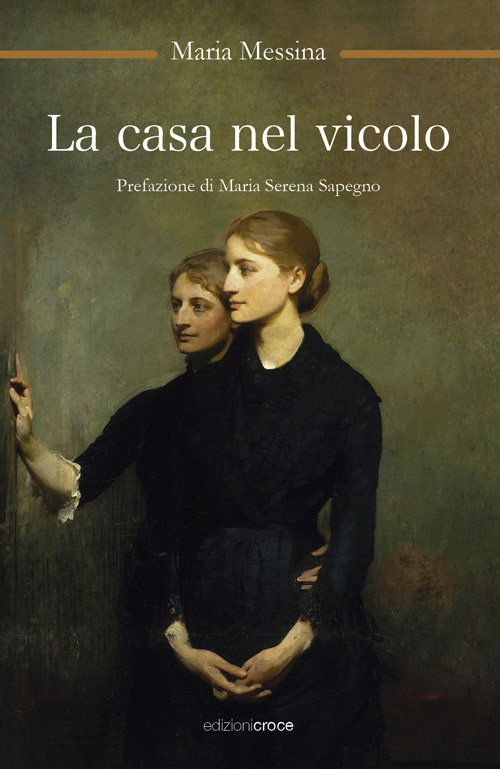
Willpower is everywhere in Messina’s life and work: In 1909, in immaculate and pretty handwriting, she had the nerve to introduce herself to Verga, one of the most celebrated authors in Italian literature and a pioneer of Verismo, asking him to support her debut book. “My faith in myself is my guiding light,” she explained in a later letter. But, and this is key to her ethos, willpower or faith should not be confused with any sort of optimism. Hers are not stories of hope, redemption, moralizing, epiphanies, or triumphing through struggle. There is no tragic catharsis that leaves you feeling virtuous just for reading. There is no curated Instagram sheen to either aestheticize or ignore suffering. Instead, each story essentially follows the same narrative arc: Protagonists are introduced in quiet misery, desire some sort of change, then see their desires betrayed, often by those closest to them. Cynicism is taught through repetition: When people and institutions and traditions prove undependable, how could you expect anything else?
I first started reading Maria Messina in a book club that included the Italian literature scholar Cinzia Sartini Blum. “This book was too depressing,” she said when we met to discuss Messina’s 1921 novel La Casa nel Vicolo [A House in the Shadows] (Marlboro Press, tr. John Shepley). She then added that she had inhaled it in a day. In a blunt, vivid style, the novel portrays two sisters living under the control of the older sister’s husband. Even though the marriage has allowed them financial security, the women live in slave-like conditions. They have no autonomy or financial independence, are not allowed to leave the house, do anything besides serve the husband’s often-unreasonable needs, or speak louder than a whisper. The only glint of freedom is sewing by dim light on the balcony. In this context, the protagonist Nicolina (whose brother-in-law will soon force himself on her) holds her newborn niece, and contemplates the future:
If only she was a boy, she thought, she’d have an easier fate. Women are born to serve and suffer. Nothing else.
What was she holding in her little closed fists? Happiness maybe. . . . All of us clench our fists at birth so as not to let go of a blessing that we will never find again.
Why would I, a pathological optimist, turn to this writer for comfort? Messina is reliably frank to the point of being ugly or inconvenient. I never feel like she’s imposing a worldview on her characters from on high, but simply exploring their minds and experience. The fact that nothing ends well in her work doesn’t feel defeatist, but sympathetic. Messina does not make empty promises, nor does she fault her characters. Brutal honesty and skepticism seems to me a refreshing starting point to think about what could be fundamentally different. “Pessimism of the intellect, optimism of the will,” the political philosopher Antonio Gramsci was famous for saying, decades after Messina embodied that idea through characters who face inescapable hardship yet continue trying to change their circumstances.
Maria Messina’s life, like her writing, is testament to both the power and limits of individual will. She reached considerable early success for a writer at the turn of the century, let alone a woman writer, let alone a Sicilian woman writer, yet hardly anyone in Italy has heard of her today. Early on, she published novellas in prestigious journals, won a Medaglia D’Oro literary prize, and published twenty-three books with the same publishers as leading and Nobel-winning writers like Pirandello, D’Annunzio, Deledda, and Aleramo. For all her success, however, during the Fascist period her work stopped being published, awarded, and distributed: Women were meant to be patriotic reproductive devices, and any form of cynical writing about rural poverty and domestic violence was counter to the regime. In some ways, Fascist ideology only made explicit the more longstanding societal expectation that women should be an uplifting presence, working enthusiastically in service to men. Cynicism in a man, on the other hand, was more likely to be read as profound, tortured, artistic. Elio Vittorini’s only-slightly-less-dark Conversazione in Sicilia [Conversations in Sicily], about similar themes, did make it past Fascist censors.
Often isolated, Messina relied on writing as a lifeline, but her MS became increasingly debilitating. On bad days she was limited to stammering her sentences to an around-the-clock nurse, but she continued working. During the war, her papers were lost or destroyed: She had to leave her home in Pistoia to escape bombardments, and no one knows what happened to the drawer where she kept with all of her manuscripts, notes, and letters from important literary figures at the time including Verga, the editor Enrico Bemporad, and the poet Alessio Di Giovanni. Despite her remarkable literary achievements, when she died at fifty-seven, her body of work was forgotten and she was buried in an unmarked grave.
The story of women whose art has been lost, undervalued, or uncredited is repetitive enough to inspire its own cynicism about any sort of fundamental change. There is an exceptional number of these stories in Italy, where high schools and universities tend to exclusively teach literature by men, and where throughout the twentieth century and into the twenty-first women’s writing was openly evaluated on sexist terms. “A lack or imperfection in artistic work is most particularly a feminine flaw,” the philosopher and politician Benedetto Croce wrote about the poetry of Ada Negri, Messina’s contemporary. “It is precisely woman’s maternal instinct, her ‘stupendous and all-consuming’ ability to mother a child that prevents her from successfully giving birth to a fully realized literary work.”
Maria Messina didn’t receive a feminist re-evaluation in the 70s either, partially because her cynicism doesn’t sit well with any ideology aiming to motivate. Other, more radical women worked better as icons: Sibilla Aleramo was a proto-feminist, queer socialist whose Bildungsroman Una Donna [A Woman] (1906), about abandoning her abusive marriage, was a rallying call for equality. Annie Vivanti wrote about how maternity destroys the self. Maria Occhipinti’s memoir describes laying down in the middle of the road while pregnant to protest the World War II draft. All of them lived and worked before 1950. Maria Messina, on the other hand, wrote about women as if they would always be victims. Her work is quiet and deeply ambivalent. There is no battle cry to be heard, just the observation that women often self-inflict as much pain and imprisonment as the men in their lives.
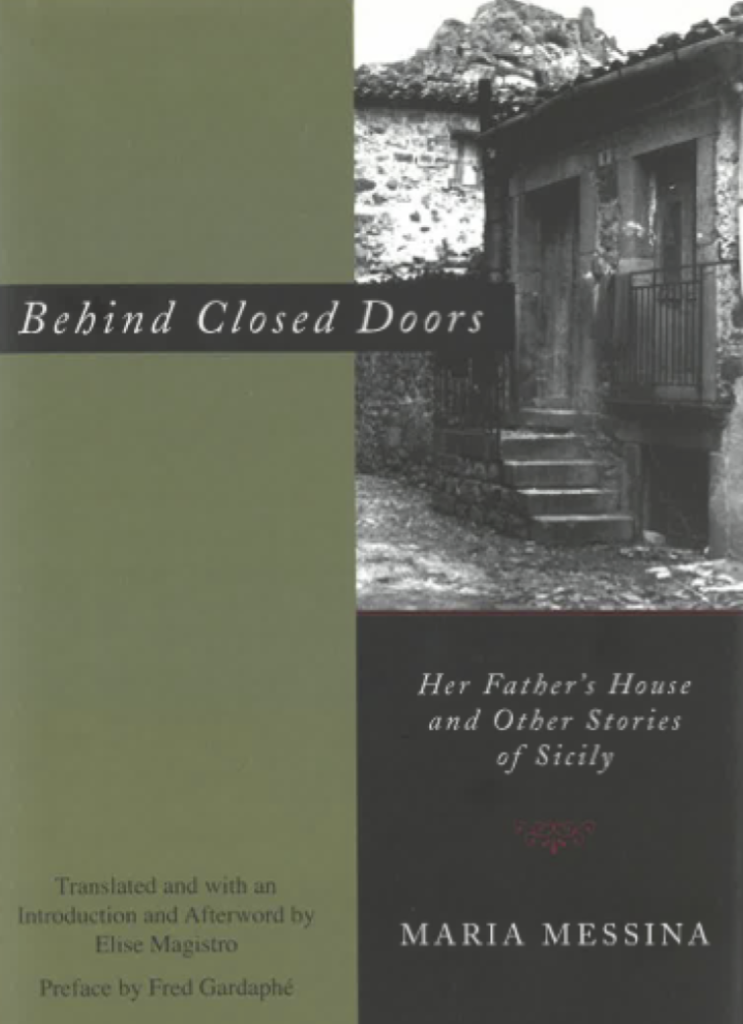
If Messina is known today it is only because her work happened to catch the attention of the influential Sicilian writer Leonardo Sciascia. Likely compelled by her work because it had an equally complicated relationship with Sicilian fatalism, he convinced the publisher Sellerio Editore to republish her books in the 1980s. Her books were translated into French, German, and English, and even arrived in the University of Iowa Library where I first encountered her—but are now once again largely out of print in Italy and abroad. Even still, they keep coming back, still stingingly present: Behind Closed Doors: Her Father’s House and Other Stories (Feminist Press; 2007) was translated in all its harsh vibrancy by Elise Magistro, and last year Edizioni Croce in Rome republished most of her books for a third time.
What makes Maria Messina’s writing ideologically unfashionable—its rejection of rhetoric about a better future—is exactly what I find comforting about it. It is bleak and tender and honest and is not trying to persuade me of anything, least of all that things will work out. It allows relief from my survival grip on optimism without throwing me into a Nihilist abyss. It doesn’t presume that individuals can change broken systems, but nonetheless rests on care. A boy whose mother abuses him finds love in an orphan he shares his rare scraps of food with, leaves to do farm work he’s not physically ready for in order to provide for them both, and after a year comes back to find her married to someone else for money. A woman raises her grandchild when her son goes to America, works while simultaneously caring for the newborn in order to survive, only to have the child—her one source of happiness—suddenly taken from her when the father has earned enough to cover only the child’s boat ticket.
Everyone in Messina’s fiction is powerless, but the sheer amount of intimacy in the prose keeps drawing you in, just as intimacy between the characters often cracks through the holding pattern of doom and injustice. Intimacy is obviously not enough to reverse cyclical poverty or patriarchy, but warmth translates into will. You want to keep reading, and the characters are often motivated by those they love, just as activists are often motivated by intimate relationships. “I loved my characters like a mother loves her children,” Messina wrote to Verga in 1911, which I read in opposition to Croce’s comment about “maternal instinct.”
The strength of Messina’s affection is infectious, and I think is a large part of why her work is constantly rediscovered and championed. It is also what made me want to visit the Sicilian mountain town Mistretta, where her stories are set and where she spent her teenage years. “Why would you go to Mistretta?” people in Palermo asked me, when I mentioned that I was going to the city of five thousand with no well-known tourist attractions. “Who?” they said, when I told them I wanted to research Maria Messina. I was used to this kind of response because almost no one I mention her name to has heard of her.
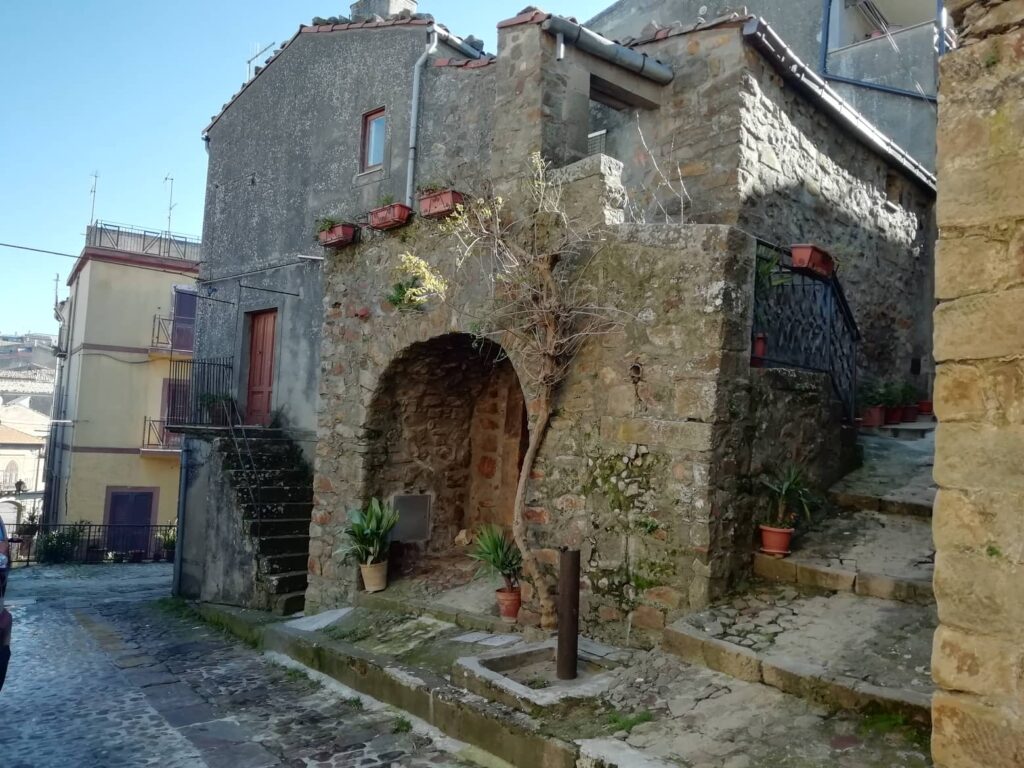
What I wasn’t used to was what happened when I got to Mistretta and had a giant plate of mortadella and salami by myself in one of its few bars. All the workers who had previously looked at me with hard stares crowded around my table and said: “Oh, of course! Maria Messina!” Then explained to the new men walking in: “She’s here researching Maria Messina.” Everyone nodding enthusiastically.
Even though Messina wrote about Mistretta’s dirty laundry, from poverty to domestic violence, Maria Messina is embraced there with local pride. In part, this could have to do with the thrill of a success story when the first things that come up Googling “Mistretta” are articles on Mafia corruption in local government. Having a writer immortalize your home is worthy of its own excitement, but there is a particular, and powerful, identification when someone knows what you’ve been through and describes it with unvarnished realism.
High in the Nebrodi mountains, which burst from every direction, Mistretta feels like a world away from Palermo, even though it’s only one hour by car. Often considered one of the most beautiful borghi in Sicily, it is surrounded by sky, sea, and mountains. The houses are all built in the same dark gray stone, and the mountain air is chilly, even on an island closer to Tunisia than to Milan. I had traveled there expecting to go on brooding walks through the places Messina described: the piazzas and tight cobble-stone alleys and fountains for mules. Instead, from the moment I arrived, I was almost never alone. And the first thing everyone said was: “You have to call Peppino Ciccia.”
In fact, I already had his number. The generous and theatrical Peppino Ciccia is a member of the Mistretta historical society, Il Centro Storico, which I had contacted through their Facebook page. The group publishes its own journal, runs the Maria Messina Prize literary competition, and is active in creative ways of honoring her legacy. No one in Mistretta had ever heard of Maria Messina, or knew she was from there, until a local librarian named Nella Faillaci read her books by chance in the nineties, and noticed the high concentration of references to places and customs in Mistretta. There was very little information at the time about Messina’s life, and what is now known was gathered in a grassroots way: scholars and citizens working together to find out what they could about her biography.
After some fervent WhatsApping, three members of the group—Lucia Graziano, Peppino Ciccia, and Mariangela Biffarella, herself a novelist—took me on a four-hour ad hoc Maria Messina street tour. We bounced down the streets, everyone talking over each other to add details of Messina’s fiction and history, telling people we ran into: “We’re on the tracks of Maria Messina!” Here was the fountain where the abused boy and the orphan girl shared a rushed, illicit kiss “like falling tulip petals.” Here was where the woman no one would marry was taken on walks by her father, nicknamed “Ti-Nesciu” because he lamented, “Ti nesciu!”—“But I let people see you!” I learned that in Mistretta, everyone knows everyone else by both their family name and family nickname that often pinpoint a negative quality. I learned that in the early twentieth century it had a population of 28,000 that hemorrhaged into nearly one-fifth of that size as everyone emigrated away to avoid stagnant poverty. Seeing how familial the town community felt, I understood in a way I hadn’t before how painful that loss would be.
Unsurprisingly, Maria Messina was highly critical of the American dream. For her “La Mèrica” is the land “where you work and you die,” “an old whore who leads you down a bad road with all of her flattery.” Messina’s stories tend to focus on an angle often less discussed in immigration: those left behind—particularly the elderly, women, and children left alone without means of survival. “I’m coming, or I’ll throw myself off the top of the Castle!” a woman tells her husband in the story “La Mèrica, 1911,” referring to the ruin at the highest point in Mistretta. By 1913, over one million Sicilians had left the island. Often it was to escape poverty created by a nearly-feudal system where only landowning, literate men had voting rights. Sometimes it was at the persuasion of local agencies that profited from selling boat tickets. The American dream was sold as much as it was felt, the way migration routes today are often exploited for profit.
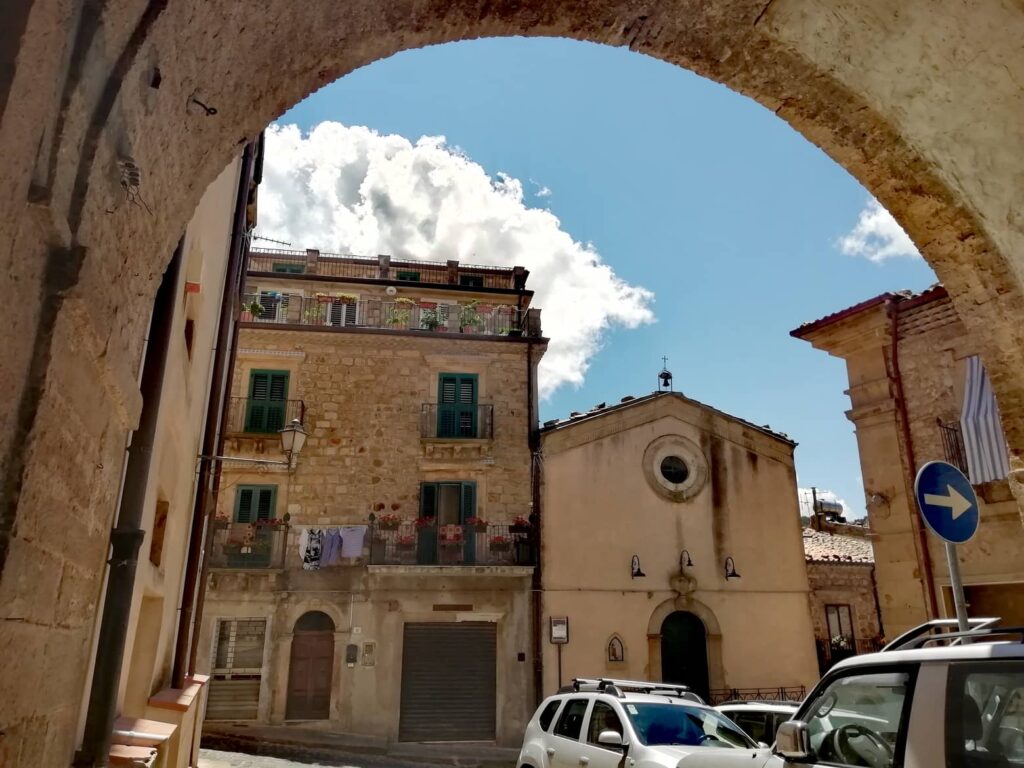
The tour of the city felt fittingly Messina-themed: full of loss and disappointment, yet so forthright and full of surprising beauty that it was almost impossible not to become attached. Here were the buried artifacts from 200 BC that the city couldn’t afford to excavate. Here were the windowless rooms where women would pass their lives. Here were the Medieval houses for sale because so many people had left and kept leaving. Here was the museum of archaeological treasures, badly run because incompetent people got jobs through corruption. Here was the poster for the new mayor, whose main appeal was that he was rich and incorruptible. Here was where kids went to watch mules mating for fun. Here was the house she lived in—on a dark street in the Medieval part of the city, a narrow gray house in the shadows. At every turn, I could see the edge of faces peering at me, curiously, judgmentally, from behind curtains.
“She reached out a hand to us, and so it seemed only right to take that hand,” Filippo Giordano, the author of Mistretta e Maria Messina: Un legame secolare [Mistretta and Maria Messina: A Secular Bond], told me when we ran into him later that day. In his free time, he had researched and self-published a history of Maria Messina and the town. I think we were both shocked that the other shared such a deep connection with this little-known writer. The entire time I had been thinking of two competing narratives about it all. In the cynical version, none of it mattered, all of that local work and passion dedicated to her name and legacy, this essay included. No one cares about her or her writing, or probably ever will. In my pathological-optimist version, her name could bring—and often does bring—tourists to a stunningly beautiful yet economically depressed town, and emboldens local writers to take their work seriously. With each wave of rediscovery, more and more is learned and cemented about her legacy. And then there is the Maria Messina version: knowing she will always be considered a minor writer—just as her characters were about populations considered marginal—but believing no less in the way her work inspires a force of will, of care.
The centerpiece of the four-hour ad hoc tour was the visit to the Mistretta cemetery. Maria Messina’s grave, once unmarked and lost, was now permanently in Mistretta. It had been Lucia’s idea to find out where Messina was buried as part of the biographical research they were doing. They knew Messina had died in Pistoia, Tuscany, but no cemetery had any records. After many calls, Lucia managed to find Maria Messina’s mother’s grave—and by chance in the records, found that Messina’s remains had been held inside it as well. With the help of the Mistretta local government, Maria Messina was made an honorary citizen, and in 2013 the historical society arranged to officially transfer both Messina and her mother to Sicily. One century after she had lived there, another local named Giorgio Giorgetti drove their remains in his Fiat from Tuscany, across the Strait of Messina, and up to Mistretta. In proud script, the gravestone had her name, her photo, and the denomination “Writer.” Under her mother’s name: “The Writer’s Mother.” The cemetery, centuries old, was on the edge of town. The air had the smell of burning wood stoves. Everything was quiet. Her grave overlooked the valleys and the mountains, the fields that permanently warped her characters bodies from plowing, the neighboring towns, the brilliant blue sea, and even through to the Aeolian islands on clear days.
Julia Conrad is a writer and translator, currently based in Palermo on a Fulbright fellowship. Her work has been published in The Massachusetts Review, Revista Nexos, Asymptote Journal, Alpinist Magazine, and anthologized in Choice Words: Writers on Abortion (Haymarket Books 2020). An Iowa Arts Fellow, she received two MFAs from the University of Iowa in Nonfiction and Literary Translation.
This post may contain affiliate links.







